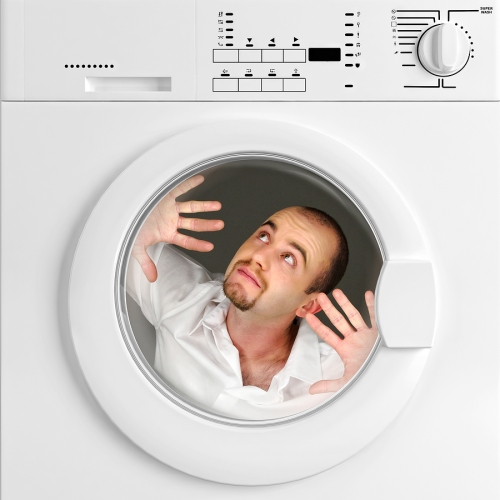Ceiling fans can be decorative, efficient, functional, or all of the above, but one thing that all ceiling fans have in common is their tendency to attract dust and airborne particles. The fan blades, especially if your ceiling fan is located in the kitchen, also collect grease particles which seem impossible to remove. Cigarette smoke and pet dander can also leave an ugly mess on your fan blades.
Before you get started cleaning your ceiling fan, check the manufacturer’s instructions retained from the fan installation to see if there are any special care tips for your particular fan model. Follow these guides carefully to ensure that you don’t cause any damage to the blades, fixtures, or motor while cleaning.
Start off by getting a small ladder or step stool so you can reach your ceiling. Make sure that the base of the ladder or stool is sturdy and even. If you have very high ceilings, have a partner help you hold the ladder while you climb up to clean the fan. Never use a chair or other piece of furniture to climb up on.
Before you climb up, make sure that your fan is turned off. Remove the surface dust from the fan blades and the base fixture with a soft cloth slightly dampened with water, or with a dust cloth that will trap the dust rather than sending it back into the air to circulate.
Using an all-purpose household cleaner, clean the top sides of each blade by spraying the cleaner onto a paper towel or soft dusting cloth and wiping the blade from the center out to the end. Never use an abrasive cleanser or cloth, as you could scratch the blades. Avoid using oil-based cleaners as well, as the oily residue left on the blades will attract even more dust and grime. When the top sides of each blade are clean, repeat the process on the bottom sides.
If the buildup of dust and grease is especially thick, try a mixture of dishwashing liquid and water to clean the blades with. Dip your cloth into the soapy water and wring it out, then proceed as usual. You may have to wipe the blades several times before the dirt begins to loosen and come away. When your cloth becomes caked with dirt, replace it with a fresh clean one.
Never spray your cleaner directly onto the fan blades or the base of the ceiling fan. Likewise, make sure that cloths that are damp with water are wrung out well to avoid drips. Any liquids that seep into the motor will affect the fan’s performance, and could ruin the motor completely.
If your ceiling fan contains any metal fixtures, they should be removed and cleaned separately with appropriate cleaners before you begin cleaning the blades. Use a dry dust cloth to wipe away any dust that may be hanging onto the pull chains and light bulbs.
After your fan is clean, you should give it a good once over with a duster once a week to keep the dirt from building up again. A thorough cleaning as described above should be done every few months, as necessary.
When dirt and grime build up on the blades of the fan, it not only looks dirty but can affect the performance of the fan. A thick layer of grime will cause the blades to wobble, and eventually this dirt can also clog the motor, causing it to run less efficiently, make strange noises, and eventually burn out altogether. Regular cleaning of your ceiling fan will keep it looking great and running smoothly for years to come.
When it comes time to repair or replace your ceiling fans or install one in a new location, call Conductive Electrical Contracting. As licensed electricians, we are qualified to run new circuits for ceiling fans or hook up a new fan to an existing circuit. We serve customers in Delaware, parts of Maryland and parts of Pennsylvania. See this page for all of our service locations.






